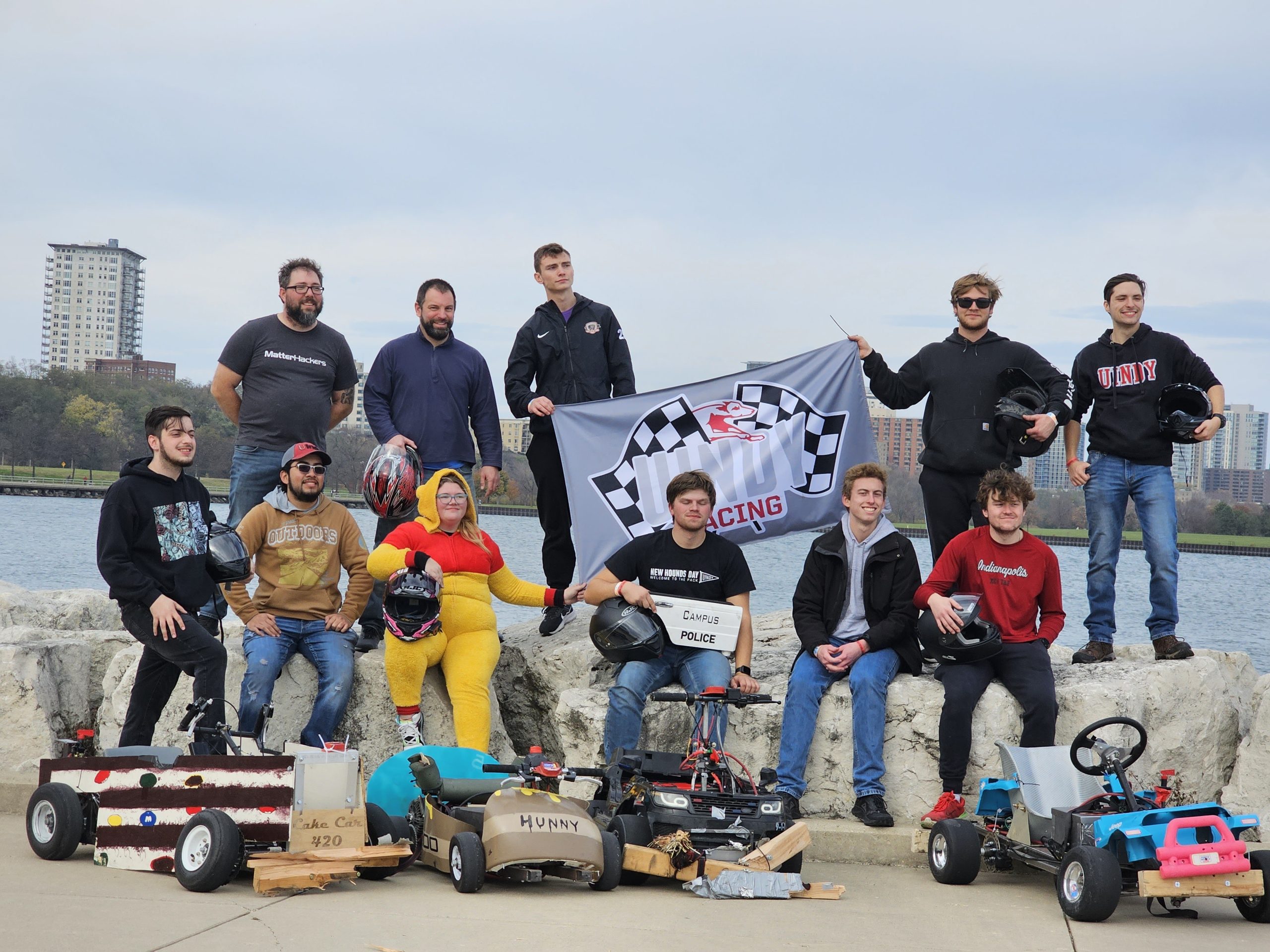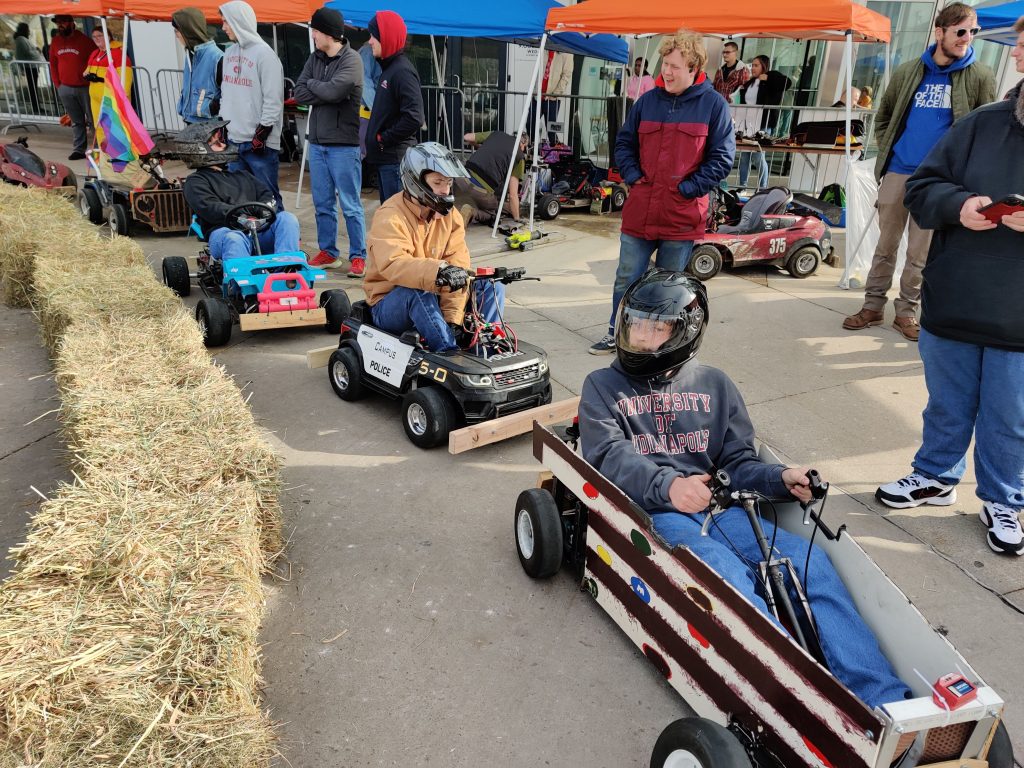From Winnie-the-Pooh to Campus Police: UIndy Racing Helps Students ‘Power’ to the Finish Line with Cars of the Future

Written by Dan Klein
There are few endeavors that combine the construction of electric vehicles with whimsical designs like a campus police cruiser or a honey pot (driven by none other than Winnie-the-Pooh)—all on a strict budget of $600 or less. But this is the world of the Power Racing Series. And it gives UIndy students real world experience and knowledge in the world of auto racing.
UIndy’s Racing RSO recently made a successful return from the Power Racing Series’ Maker Faire in Milwaukee Nov. 4-5. Associate professor of engineering and UIndy faculty advisor Dr. Paul Talaga and James Emery, manager of mechanical systems and laboratories, led nine students on the trip.
The team brought a total of four vehicles to the event, each with its own theme: a honey pot, a police cruiser, a piece of cake, and a bright blue and pink Power Wheels Jeep. While there are strict rules about power limitations, safety systems and budget, costumes, themes and “moxie challenges” are all part of the scoring and fun.

Most importantly, UIndy Racing gives students a chance to put their learning about mechanical, electrical, and project management together to compete in the challenge in an extremely experiential way.
“The Power Racing series challenge is a great way for students to gain hands-on skills in nearly every discipline of engineering,” said Talaga. “Just like larger engineering problems, there are always tradeoffs involved, with creativity, ingenuity, and risk management required to be successful. Experiential learning is extremely important, especially in engineering.”
The Maker Faire had five races spread out through the weekend, all located in the front parking lot of the Discovery World Museum, a science and technology museum located in downtown Milwaukee, where children and families could watch everything going on.
UIndy’s Racing RSO was revitalized this fall with a new group of students ranging from freshman to juniors. They met most weeks on Wednesday evenings. Students spent anywhere from 3 to 20 hours on their project.
Talaga and Emery put in about 40 hours designing and building the battery packs with the help from students. Because the batteries are one of the more dangerous parts of the cars, they wanted to make sure they would perform well while being as safe as possible.
“The Racing RSO is a good motivator for students to create their own engineering experiences without the pressure of grades,” said Talaga. “Rather, the fun of racing and the threat of embarrassment were their motivators. Failures, setbacks, group dynamics, shipping delays, and many other issues all were experienced firsthand.”
The group is already talking about attending more Power Racing Series races next year. Now that they have a few operational cars, don’t be surprised to see them in the parking lot as they work on upgrades and reliability fixes. They’re also discussing some smaller events on campus like a pinewood derby to involve more students.
